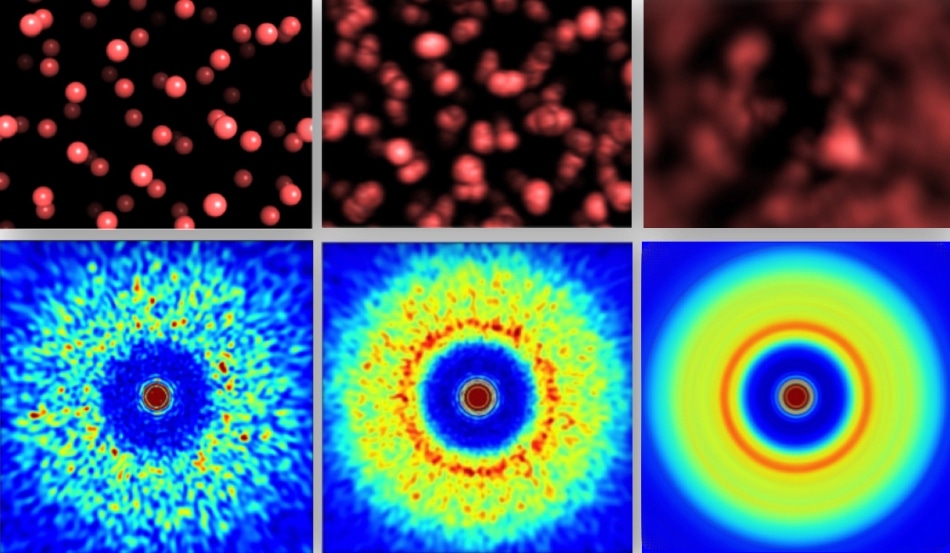May 21 2018
The lack of taste, color, and smell makes water seem simple on a molecular level. While this is true, water can be more complex than it appears. Large numbers of water molecules form a highly complex network of hydrogen bonds when they come together. This network is assumed to be responsible for most of the unusual properties of liquid water, but its behavior is yet to be completely understood.
 Image credit: Fivos Perakis/Stockholm University
Image credit: Fivos Perakis/Stockholm University
Now scientists have examined the movements of water molecules in liquid water that happen in less than 100 millionths of a billionth of a second, or femtoseconds. Led by Stockholm University researchers, an international team performed the experiments using the Linac Coherent Light Source (LCLS) X-ray laser at SLAC National Accelerator Laboratory of the Department of Energy. The results of their study have been reported in Nature Communications.
This is the first study to “photograph” water molecules on this timescale with a method known as ultrafast X-ray photon correlation spectroscopy. This technique creates a series of diffraction patterns by bouncing X-rays pulses off the molecules. When the duration of the X-ray pulses is varied, the exposure time will also vary; during an exposure, any movement of the water molecules will blur the ensuing picture. The researchers analyzed the blurring created by different exposure times and extracted data about the molecular motion.
Water molecules on this timescale were believed to move arbitrarily because of heat, and they behave more like a gas than a liquid. But, the experiments demonstrate that the complex network of hydrogen bonds also plays a major role on this ultrafast timescale, coordinating the movements of water molecules in a complicated dance. When water is “supercooled” below its usual freezing point, this intricate dance becomes even more pronounced.
“The key to understanding water on a molecular level is watching the changes of the hydrogen-bond network, which can play a major role in biological activity and life as we know it,” says Anders Nilsson, a former professor at SLAC and professor at Stockholm University.
Fivos Perakis, Stockholm University researcher, adds, “It is a brand-new capability to be able to use X-ray lasers to see the motion of molecules in real time. This can open up a whole new field of investigations on these timescales, combined with the unique structural sensitivity of X-rays.”
Computer simulations reproduced the experimental results, which demonstrate that the formation of transient tetrahedral structures is responsible for the coordinated dance of water molecules.
I have studied the dynamics of liquid and supercooled water for a long time using computer simulations, and it is very exciting to finally be able to directly compare with experiments. I look forward to seeing the future results that can come out from this technique, which can help improve the current water computer models.
Gaia Camisasca, Postdoctoral Researcher at Stockholm University
SLAC’s Thomas J. Lane, Sanghoon Song, Takahiro Sato, Marcin Sikorski, Andre Eilert, Trevor McQueen, Hirohito Ogasawara, Dennis Nordlund, Jake Koralek, Silke Nelson, Philip Hart, Roberto Alonso-Mori, Yiping Feng, Diling Zhu and Aymeric Robert contributed to this research, together with scientists from KTH Royal Institute of Technology in Stockholm and DESY in Hamburg. LCLS is a DOE Office of Science user facility.